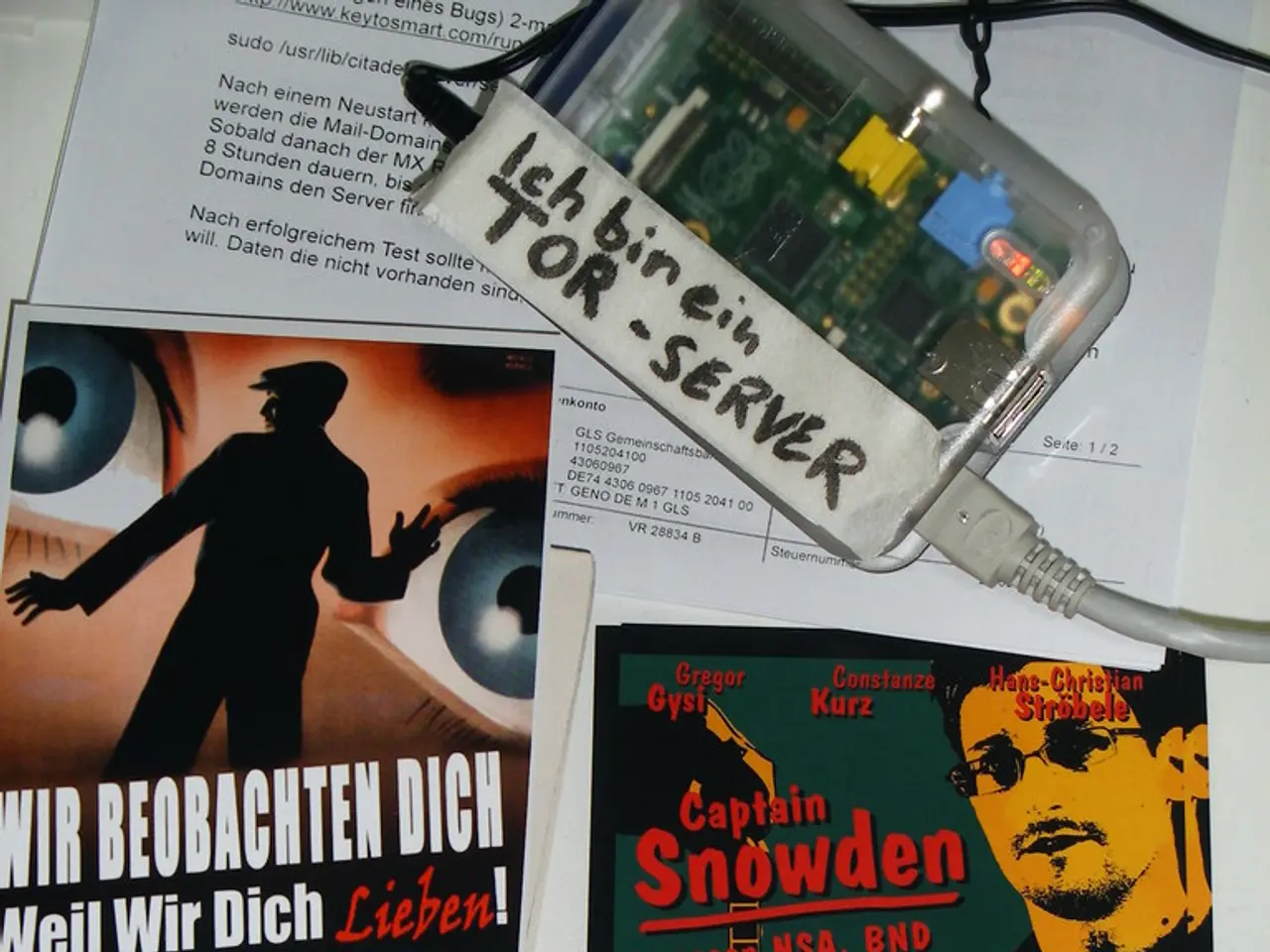Unusual Substance Transitions Between Conductive and Insulative States, Potentially Amplifying Computers' Capabilities by a Thousand Folds
In a groundbreaking discovery, a team of researchers led by Alberto de la Torre from Northeastern University, in collaboration with researchers from Brown University, have successfully reconfigured the free-energy landscape of a quantum material, 1T-TaS2, using thermal control alone [1][3]. This breakthrough, published in Nature Physics, promises to revolutionise the field of electronics by enabling ultra-fast, energy-efficient devices that surpass existing silicon technology limits.
The researchers achieved this feat by applying a thermal quenching method, which involves heating the material above 580°F and then cooling it rapidly at about 120°F per second [3]. This process stabilises domains of a hidden metallic phase within the crystal structure, effectively "freezing" them for extended periods [1][3].
The stabilised mixed phase remains stable for months without reverting, a significant improvement over previous methods that induced this phase transiently and required cryogenic temperatures [1][3]. This extension of the metallic state's lifetime allows it to persist at much higher, more practical temperatures, eliminating the need for costly and bulky liquid helium cooling systems.
One of the key effects of thermal quenching is the creation of stable metallic regions within the material. These regions exhibit electrons available at the Fermi level, indicative of good electrical conductivity, contrasting with nearby insulating areas characteristic of a Mott insulator [1]. This dual-phase coexistence is intrinsic to the material's electronic structure.
The new mixed phase could, in theory, act as both conductor and insulator, simplifying device architectures and unlocking speeds that silicon can't reach [1][3]. The switching speed between insulating and metallic states in 1T-TaS2 could allow devices to operate at terahertz frequencies, about 1000 times faster than current gigahertz processors [1][3].
This discovery could potentially replace complex silicon-based multi-material architectures with a single quantum material, greatly reducing power consumption and enhancing computing efficiency and speed [1][3]. The coexistence of metallic and insulating states controlled by temperature and thermal history offers intrinsic memory functionalities and reprogrammability, leading to more efficient logic and storage devices that operate at room temperature or above [1][3].
The researchers aim to develop techniques for engineering and manipulating the domains in 1T-TaS2 with greater precision [3]. The hybrid phase features mirror-image arrangements of electron patterns, further supporting its dual nature [1]. This research not only paves the way for terahertz-speed electronics but also opens new paradigms in computing devices.
Sources: [1] Nature Physics (2022). Controllable metallic and insulating phases in 1T-TaS2. [2] Alberto de la Torre, Physicist at Northeastern University. [3] Brown University. (2022, March 28). Physicists stabilize a rare phase of matter for electronics revolution. ScienceDaily. Retrieved April 1, 2022 from www.sciencedaily.com/releases/2022/03/220328161730.htm
- The breakthrough in science by Alberto de la Torre's team, published in Nature Physics, involves the reconfiguration of a quantum material, 1T-TaS2, using technology like thermal control, which could revolutionize the field of electronics.
- The researchers achieved this by applying a thermal quenching method, a technology that creates stable metallic regions within the material, with electrons available at the Fermi level, allowing for good electrical conductivity.
- The coexistence of metallic and insulating states in 1T-TaS2, controlled by temperature and thermal history, offers intrinsic memory functionalities and reprogrammability, potentially leading to more efficient logic and storage devices that operate at room temperature or above.
- This new technology could replace complex silicon-based multi-material architectures with a single quantum material, thereby reducing power consumption and enhancing computing efficiency and speed.
- The discovery of this hybrid phase in 1T-TaS2 promises to enable devices to operate at terahertz frequencies, about 1000 times faster than current gigahertz processors, and could pave the way for terahertz-speed electronics and new paradigms in computing devices.



